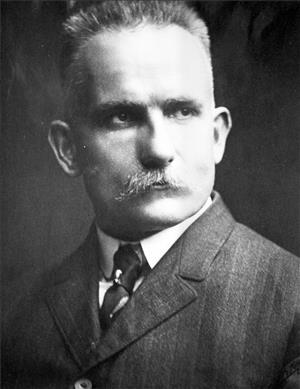On July 9, 1888, voters elect businessman Robert Moran (1857-1943) as mayor of the City of Seattle. He will be elected to a second term the following year before going on to a career in shipbuilding and then developing Rosario, an elegant estate on Orcas Island.
Before running for mayor, Moran served on the Common Council (predecessor to the City Council). He was also a successful businessman. He and his brothers Peter and William had established Moran Brothers, a marine repair and machine shop, in 1882.
Fire and Water
Moran took office on July 30, 1888, three weeks after being elected. (At the time, elections were held on the second Monday of July, and the mayor's term of office was one year.) One of his early acts as mayor was to call for Seattle to develop a new, city-owned water system supplied by the Cedar River, in place of the private water systems that then pumped water from lakes Washington and Union, which Moran recognized as inadequate for the growing city. The council agreed, but before any action was taken most of Seattle's downtown business district was destroyed on June 6, 1889, by what became known as the Great Fire. Moran's leadership in working for a new water system and organizing relief efforts in the aftermath of the fire inspired confidence and contributed to his re-election the following month. During his second term, the city took the first steps toward creating a municipal water system.
Moran also faced the challenge of rebuilding his own business after the shop and most of its contents, including machine tools and engineering equipment, were destroyed in the Great Fire. The Moran Brothers Company moved to a new location, on a tract of tideland at the bottom of Charles Street, and was back in business just 10 days after the old plant was swept away. Demand for its services was high as the city rebuilt its wharves, streets, sidewalks, and sewers. In December 1889, the company was reorganized, with a capitalization of $250,000. Robert Moran was named president, secretary, and treasurer, and Peter Moran served as vice president. Mayor Moran did not seek re-election after his second term, focusing instead on his business.
Moran Brothers moved into shipbuilding in the mid-1890s and eventually became one of the premier shipbuilders in the Northwest. The apex of Robert Moran's career came in 1904, when his shipyard launched the USS Nebraska, the only battleship to be built in Washington state. The Nebraska was the flagship of the U.S. Navy's "Great White Fleet." Consumed and exhausted by the ship's construction, Moran sold the company and retired in 1906.
Rosario
He spent his later years on Orcas Island, one of the San Juan Islands located northwest of Seattle, between the Washington mainland and Canada's Vancouver Island. Moran eventually acquired more than 5,000 acres of land on the island. He personally supervised the construction of an elaborate mansion on an estate he named Rosario. The mansion, completed in 1909, includes a living-dining room paneled in rich Honduran mahogany and teak, reminiscent of ship's carpentry, and windows made of the same Belgian plate glass used as ship's glass.
Moran's wife of 51 years, Melissa, died in 1932. With his personal fortune eroded by the Great Depression, he had difficulty maintaining the estate after that. In 1938, he sold the mansion and 1,339 acres of surrounding land to a California industrialist for only $50,000 (the Aeolian pipe organ, installed in the mansion's second floor music room in 1913, cost almost half that price). Moran remained on the island, in a small house, until his death in 1943.
The mansion and surrounding property were developed as a resort. In 2012 Rosario, which is listed on the National Register of Historic Places, remains a luxury resort, although the mansion itself no longer provides accommodation.

